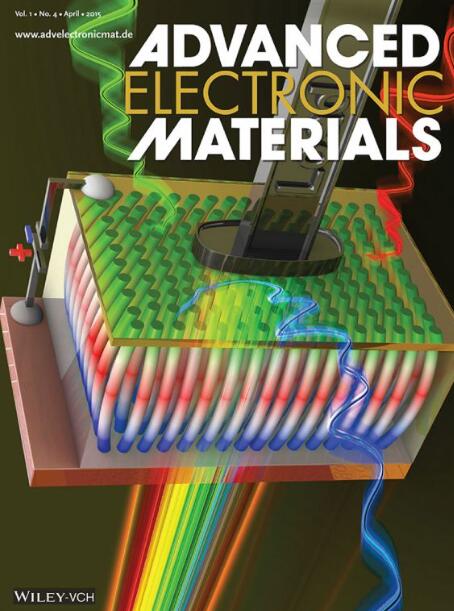Inkjet Printable Semiconducting Inks for Enhancement‐Mode Organic Electrochemical Transistors
IF 5.3
2区 材料科学
Q2 MATERIALS SCIENCE, MULTIDISCIPLINARY
引用次数: 0
Abstract
Additive manufacturing technologies offer a promising avenue for advancing the microfabrication of organic electronic devices. In this study, inkjet printable semiconducting inks derived from commercially available p‐type and n‐type conjugated polymers, namely poly(3,4‐ethylenedioxythiophene):polystyrene sulfonate (PEDOT:PSS) and poly(benzimidazobenzophenanthroline) (BBL) are developed. These inks are used to fabricate organic electrochemical transistor (OECT) channels at a deposition resolution of 20 µm with high electrochemical stability under prolonged biasing stress. The versatility of the inks is demonstrated through the fabrication of OECTs on various substrates, including glass, polyimide, and paper, and in one example, all device components are printed exclusively from PEDOT:PSS. The de‐doped PEDOT:PSS channel is integrated with a BBL channel, constructing printed monolithic electrochemical complementary amplifiers performing as a NOT logic gate. Furthermore, The applicability of the PEDOT: PSS‐based enhancement mode device operation in electrochemical sensing, achieving high sensitivity to physiologically relevant concentrations of ascorbic acid is showcased. This work aligns with the objective of democratizing access to advanced electronic materials and devices, facilitating fabrication processes without the need for scarce materials, expensive equipment, or specialized facilities.用于增强型有机电化学晶体管的可喷墨打印半导体油墨
增材制造技术为推进有机电子器件的微加工提供了一条有前途的途径。在这项研究中,由市售的p型和n型共轭聚合物,即聚(3,4 -乙烯二氧噻吩)、聚苯乙烯磺酸盐(PEDOT:PSS)和聚(苯并咪唑苯并菲罗啉)(BBL)衍生出可喷墨印刷的半导体油墨。这些油墨用于制造有机电化学晶体管(OECT)通道,其沉积分辨率为20 μ m,在长时间偏置应力下具有高电化学稳定性。通过在各种基材(包括玻璃,聚酰亚胺和纸张)上制造oect,证明了油墨的多功能性,并且在一个示例中,所有器件组件都完全由PEDOT:PSS印刷。去掺杂的PEDOT:PSS通道与BBL通道集成,构建了作为非逻辑门的印刷单片电化学互补放大器。此外,本文还展示了基于PEDOT: PSS的增强模式器件在电化学传感中的适用性,实现了对抗坏血酸生理相关浓度的高灵敏度。这项工作的目标是使先进的电子材料和设备的使用民主化,在不需要稀缺材料、昂贵设备或专门设施的情况下促进制造过程。
本文章由计算机程序翻译,如有差异,请以英文原文为准。
求助全文
约1分钟内获得全文
求助全文
来源期刊

Advanced Electronic Materials
NANOSCIENCE & NANOTECHNOLOGYMATERIALS SCIE-MATERIALS SCIENCE, MULTIDISCIPLINARY
CiteScore
11.00
自引率
3.20%
发文量
433
期刊介绍:
Advanced Electronic Materials is an interdisciplinary forum for peer-reviewed, high-quality, high-impact research in the fields of materials science, physics, and engineering of electronic and magnetic materials. It includes research on physics and physical properties of electronic and magnetic materials, spintronics, electronics, device physics and engineering, micro- and nano-electromechanical systems, and organic electronics, in addition to fundamental research.
 求助内容:
求助内容: 应助结果提醒方式:
应助结果提醒方式:


